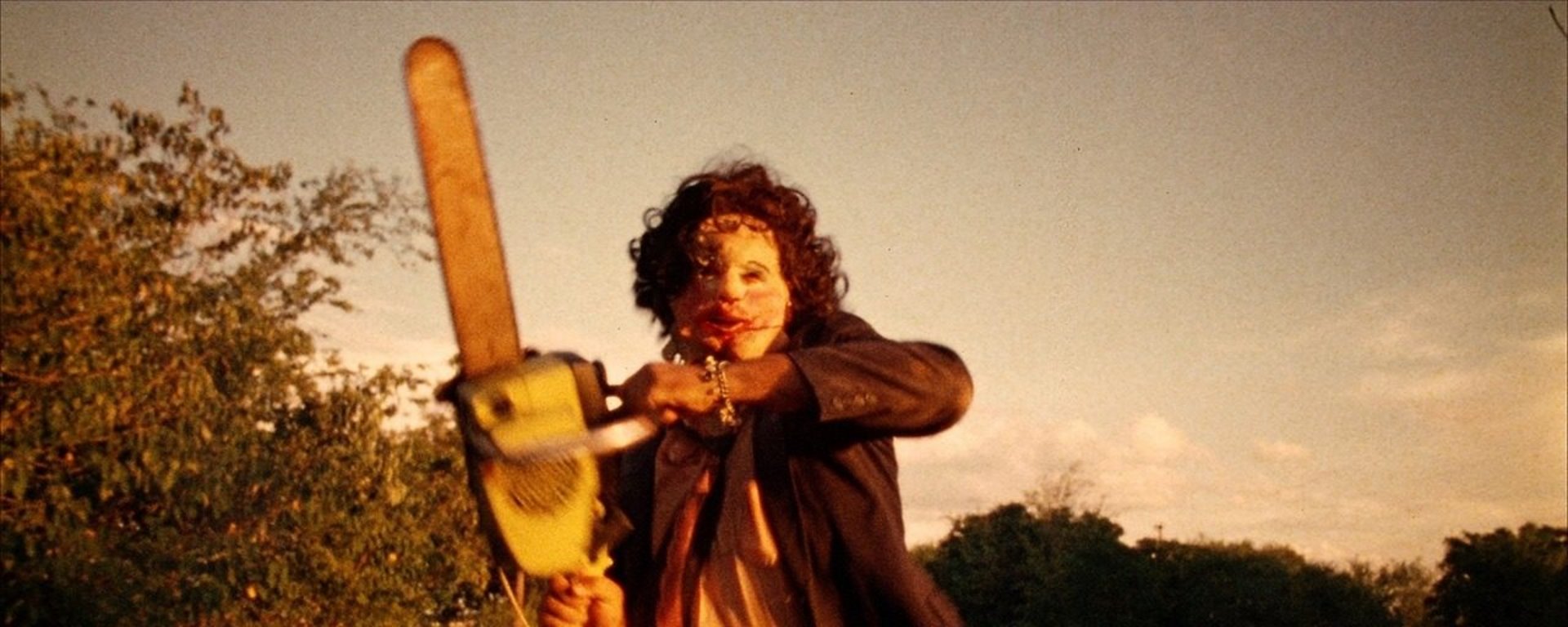
The Texas Chainsaw Massacre
Tobe Hooper's seminal horror film was first seen informally by the BBFC's Secretary, Stephen Murphy, on 27 February 1975. Murphy regarded it as a good, well-made film but felt strongly that the level of terrorisation, particularly towards the end of the film, and the film's focus on 'abnormal psychology' was unsuitable for a BBFC X certificate to be issued. The distributor reacted to this advice by making some minor reductions in the final scenes of terrorisation, formally submitting a slightly truncated version on 12 March 1975.
Perhaps unsurprisingly, the film was refused a certificate on 14 March 1975, partly on the basis that it was likely to prove unacceptable to the majority of local councils. It was noted at the time that the film relied for its effect upon creating an atmosphere of madness, threat and impeding violence, whilst shying away from showing much in the way of explicit detail. This made it very difficult for the BBFC to cut the film into what might be regarded as an acceptable version since there were few moments of explicit violence that could be removed. Even if these elements were cut, it did nothing to alter the disturbing 'tone' of the film.
The film was subsequently submitted to the Greater London Council in a version accidentally missing 28 seconds. They agreed to classify the film X without cuts for showings in London. Although it was approved by a number of other local councils to whom it was submitted, some other councils shared the BBFC's misgivings and banned the film.
In the summer of 1975, Stephen Murphy stepped down as Secretary of the BBFC and was replaced by James Ferman. During the late 70s, Ferman was asked to look at the film on at least two separate occasions, to see whether any cuts could be made to render the film acceptable for national release. However, despite looking carefully again at the two most sadistic scenes - the killing of Pam and the attempted killing of Sally - Ferman was forced to agree with his predecessor that this was not a case where cutting the worst moments made a significant enough difference to the film. Ferman concluded that the real problem lay in the extended terrorisation of Sally, which takes up the entire final section of the film. Although little violence is shown, the sense of menace is strong and is intensified by Sally's almost constant screaming and crying.
Ferman described the film as 'the pornography of terror', in that its intention seemed to be to invite the audience to revel in a vulnerable woman's distress, and concluded that the film could not be classified.
The film received a new lease of life at the end of 1981 when it was released on video, without a BBFC certificate (until 1985 there was no formal requirement that videos should be classified by the BBFC). At around this time, the BBFC was once again asked to consider cuts for a legitimate video release but failed to see how an acceptable version could be produced. There was some suggestion that the additional 18R category, recommended by the Williams Committee, might provide an acceptable solution but it soon became clear that the new category would be likely to relate only to material for sale in sex shops, where the film clearly did not belong, and this idea was dropped. The film therefore fell into limbo and was removed from the shelves following the introduction of the Video Recordings Act 1984.
In 1998 a new print of the film was submitted to Camden Council in London and was awarded a local 18 certificate for showing in Camden only. It was subsequently given a late night screening at the 1998 London Film Festival and then ran successfully in Camden at the beginning of 1999.
With the film once again playing at a cinema only five minutes walk from the BBFC's Soho offices, the BBFC was again asked to consider the film. By modern standards the film was considered to be less likely to disturb adult viewers, many of whom would feel the film to be dated and feeble compared to more recent horror offerings. This time the BBFC was impressed, rather than disturbed, by the film's reliance on atmosphere rather than explicit violence, although it was accepted that the film still retained some of its power to shock and unsettle. Most importantly, unlike other films of the period, the film contained no element of sexual violence. Accordingly the film was passed 18 uncut for cinema release on 19 March 1999 and, subsequently, 18 uncut for video and DVD release.